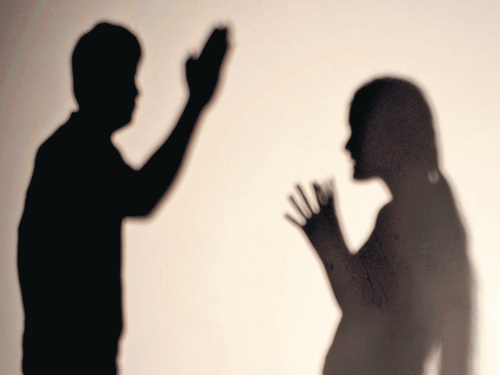
Curtailing the scope of Section 498A can have dangerous consequences for women who anyway find it hard to fight for their legal rights, writes Pushpa Achanta
The Sections 498A and 304B of the Indian Penal Code (IPC) as well as the Protection of Women Against Domestic Violence Act, 2005, are three closely-related legal and judicial provisions designed to safeguard the interests of married women in India. They are significant considering the large number of women that suffer domestic violence – physical, sexual, verbal, emotional, mental, – at the hands of their husbands or his family.
Of course, from the last few years, concerted efforts have been made to discredit the complaints filed under them on the grounds that Section 498A, in particular, is being ‘misused’ by supposedly vengeful wives and daughters-in-law. In fact, even the Supreme Court issued an order in July 2014 preventing the arrest of the husband or his family members till there were sufficient and valid reasons.
One of the grounds on which the Apex Court gave its judgment was the 2013 National Crime Records Bureau (NCRB) data. Jayna Kothari, a Bengaluru-based litigator, elaborates, “The NCRB data, which the Supreme Court referred to while pronouncing the judgment regarding 498A, reveals that in 2013, around 93 percent cases of crimes against women were booked under section 498A. Among them, the accused was convicted in only 15 percent of the cases.”
However, S T Ramesh, former Karnataka Director General of Police-Human Resources and Training, is quick to point out that he is, in fact, “surprised and glad that the conviction rate is 15 percent because it is usually much lower”. He explains, “Essentially, the NCRB obtains data from the state governments. In some states, the actual number of cases registered is not reported or deliberately shown to be less because large figures are considered a black mark on the police department.”
Through the years that Shanthamma has been working with Vimochana, a forum for women’s rights in Karnataka, she has provided support and guidance to many women in distress in Kolar district. Her experiences of dealing with the police definitely confirm Ramesh’s observation that the registration of cases is not always above board. Shanthamma vividly recalls meeting Maya who had filed a domestic violence case against her husband but ended up being brutally beaten by the law enforcers.
“After Maya, who works with an Information Technology firm in Kolar, lodged a domestic violence complaint with the police, her husband, a lawyer, filed a counter case. Consequently, she was picked up from her office one afternoon and taken to the police station where she was brutally beaten. Eventually, it was revealed by the local media that her husband had paid off the police to torture her,” she says.
Then there are also times when a complainant, her natal family as well as friends and well-wisher are either threatened or ‘counselled’ into withdrawing the case. Take the case of Rekha, 23, who was married to a gym instructor in Attibele, a small town in Bengaluru Rural district. Mamatha, another committed activist with Vimochana, elaborates, “Rekha was being mentally and emotionally harassed by her husband. He used to taunt her about her appearance and even forced her to watch pornographic material. Yet, when the disturbed young woman approached the police for help, they tried to ‘counsel’ her and told her to ‘put up’ with him as he was her husband.”
When Mamatha tried to intervene and insisted that the police file a formal FIR, she invited the wrath of the husband. “I have been regularly receiving threats from him. Consequently, Rekha is now scared of going to the police or the courts. She lives in constant fear,” she adds.
Typically, it’s not easy to get a domestic violence complaint registered, let alone gain a conviction. This is largely due to the inherent bias in the system towards women who are ‘audacious’ enough to want to complain against their husbands.
Says Ramesh, “Most policemen grow up seeing their father beating their mother, an older brother receiving a hefty dowry or a teenaged sister being married off. So they don’t see anything wrong in their attitude. The women in the force follow in the footsteps of their insensitive male counterparts as they don’t want to be labelled as soft or be accused of favouring women.” This outlook is held by some judges, too, who are inclined to deliver biased verdicts.
“I find that there is a real reluctance to change,” says Donna Fernandes, founder of Vimochana. She recalls how when she had approached a senior judge of the High Court of Karnataka with the idea of conducting gender sensitisation sessions with members of the judiciary, he had dismissed it as “unnecessary”.
It is unfortunate that such cases show no signs of reducing. Moreover, as per data gathered from the Bengaluru police in 2014, a majority of the cases booked under Section 498A were indeed genuine. Donna feels that although harassment and assault on a woman for dowry constitutes domestic violence, offenders should be charged under the Dowry Act 1961 and not under Section 498A.
Unfortunately, though, domestic violence against women, dowry and harassment are an undeniable reality of the Indian society. Therefore, discrediting complaints filed under the Protection of Women Against Domestic Violence Act and Sections 498A and 304B of the Indian Penal Code, or curtailing their scope can truly have dangerous consequences for women who anyway find it hard to fight for their rights and dignity.